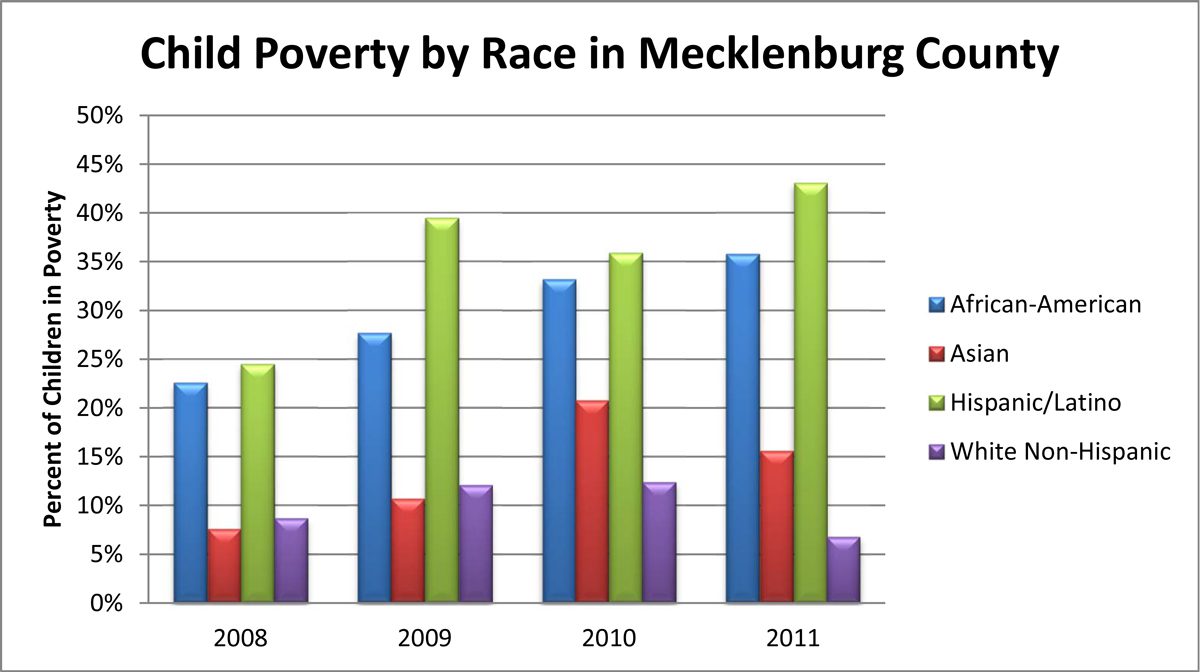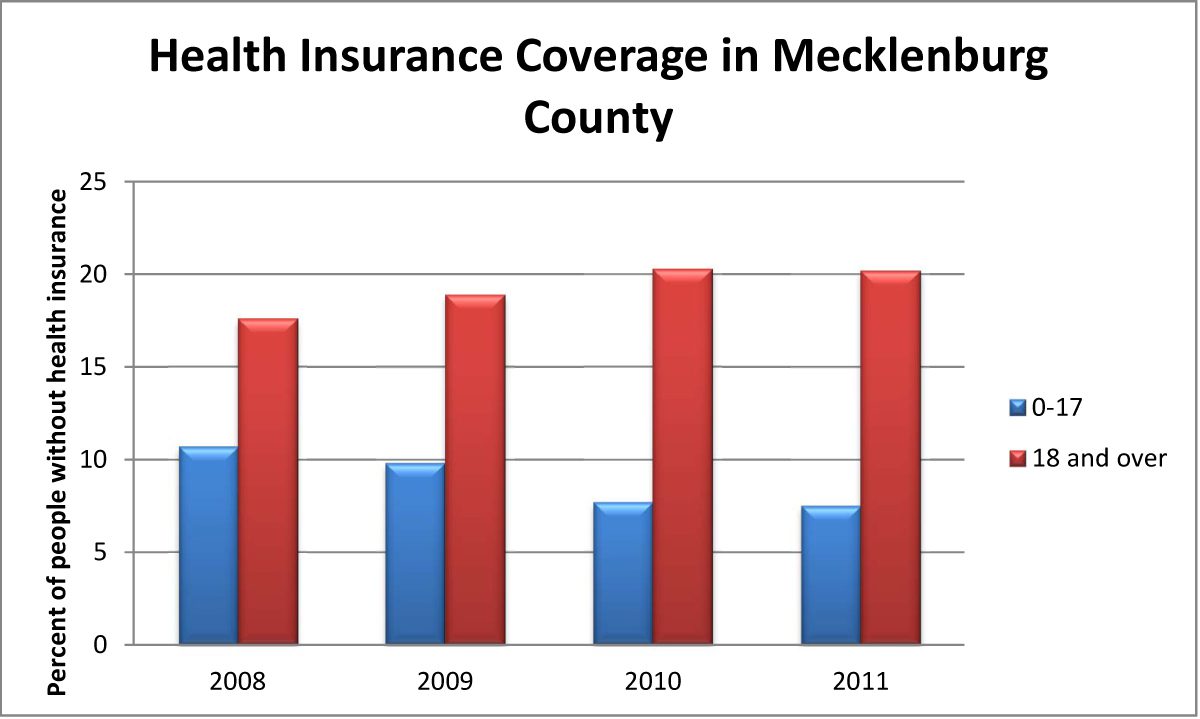Charlotte’s economic recovery struggles to take hold

Charlotte has lagged much of the country in this period of economic recovery, but the region has finally begun to see a few small signs of better days on the horizon. Over the past several months, there has been gradual improvement in the unemployment rate and home price index in the region. These bright spots are welcome news in a region that continues to suffer the effects of the Great Recession.
Despite these encouraging signs in the monthly numbers, new data* paint a less than rosy picture of economic and social well-being in the Charlotte region in 2011. Several statistics stand out:
- The unemployment rate has improved in Mecklenburg County overall and across all major demographic groups.
- The poverty rate in Mecklenburg County is 17.1 percent, its highest point in the years tracked on this site (since 2000).
- The Charlotte metropolitan area is doing worse than nearly all its peers in terms of poverty rate and health insurance coverage.
- The number of households receiving food stamps shot up in Mecklenburg, Cabarrus and Iredell counties just in the past year.
- Residents of Mecklenburg County have access to fewer vehicles than in the past, but fewer are commuting via carpool.
The Regional Indicators site enables the tracking of trend data on the subjects (above) and data partnerships with community organizations has allowed for many data items to be tracked with more detail for the region.
Among the findings:
|
The Regional Indicators website is part of the suite of sites from the UNC Charlotte Urban Institute. Here data are tracked on a number of themes for the 14 counties surrounding Charlotte. Through our data partner program, other agencies in the region help provide even more data. |
Unemployment rate improved for all demographic groups
The unemployment rate has improved across the board in Mecklenburg County, but some groups saw greater improvement than others. Among the racial groups, African-Americans experienced the greatest improvement over the year, falling from 19.7 percent to 16.2 percent jobless, but they still have much higher unemployment rates than Latinos (10.5 percent) and whites (8 percent). Looking at the data by gender, the unemployment rate among men dropped further than it did for women.
Poverty continues to worsen as does the racial disparity in child poverty rates
The Charlotte metropolitan area now has the second highest family poverty rate of its 12 benchmark cities1, at 12.4 percent. Atlanta has the highest at 12.8 percent. The rate is much higher for single-parent families, with nearly 30 percent living below the poverty line in Mecklenburg County.
The child poverty rate has also increased, as has the racial disparity in child poverty rates. Between 2010 and 2011, poverty among African-American and Hispanic children in Mecklenburg County rose from 33.2 to 35.8 percent and from 35.9 to 43.1 percent, respectively. Over the same time period, the poverty rate for Asian and white children fell from 20.8 to 15.6 percent and 12.4 to 6.8 percent, respectively.

Among the counties United Way of Central Carolinas serves, the number of households receiving food stamps increased dramatically. This number doubled in Iredell County, going from 3,420 to 7,134, and increased by 40 percent in Cabarrus and 26 percent in Mecklenburg counties between 2010 and 2011. Changes in eligibility requirements, coupled with additional funding for states to administer the program from the 2009 stimulus bill are likely behind much of this growth.
Health insurance coverage still subpar in Charlotte metro
The Charlotte metropolitan area is next to last (in comparison to its 12 peer metros) for the second year in a row in the percentage of people with health insurance, at 83.4 percent. Atlanta has the lowest at 80.1 percent. In Mecklenburg County, health insurance coverage has improved for children under 18 since 2008 (down from 10.7 percent uninsured to 7.5 percent) but worsened for the adult population (up from 17.6 percent uninsured to 20.2 percent uninsured).

Men have greater access to vehicles than women, and both figures are down
The number of vehicles people have access to has declined in Mecklenburg County. In 2011, a smaller portion of the population had access to three or more vehicles and a larger share had access to just one vehicle than in 2010. The gender disparity in vehicle access continues to exist without much change, with men having greater access to vehicles than women.
At the same time, the percent of workers using carpools to commute shrank for a third straight year. In Mecklenburg County, the share of commuters carpooling was nearly 12 percent in 2008 and is now down to 9 percent in 2011.
1Benchmark cities for Charlotte on the Regional Indicators website are: Atlanta, Denver, Indianapolis, Jacksonville, Kansas City, Minneapolis, Nashville, Pittsburgh, Portland, Raleigh, Richmond and San Francisco.
*These data come from the 2011 American Community Survey (ACS) 1-year Estimates, released by the Census Bureau at the end of September. The ACS is a nationwide survey that collects population and housing information from about 3 million households each year, and in 2010, it replaced the long form of the decennial Census. The one-year estimates provide data on areas with 65,000 people or more. There are also three-year estimates, which cover areas with populations of 20,000 or more and five-year estimates which cover all areas down to the census tract.